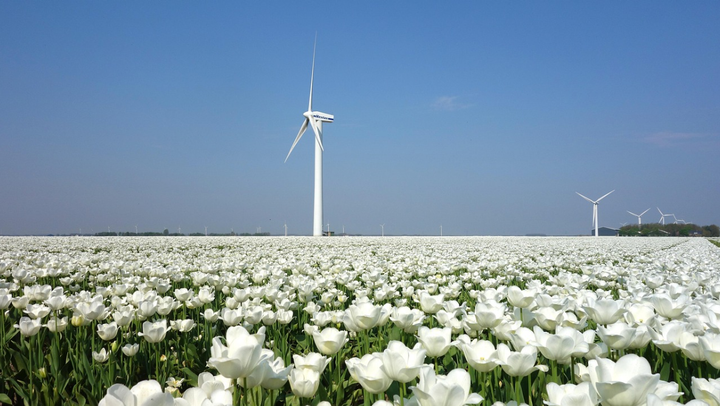Innovation’s Role in Economic Growth

Luq Hobbs-Iskander
For many centuries before the industrial revolution, economic growth remained stagnant due to the lack of technology and innovation: Farms being harvested manually, global trade being severely limited, and many more similar reasons. Then, in the late 18th century, economies all over the world started to grow exponentially due to capital based innovation. However, scarce resources sparked debates as to whether this growth would be sustained and continued, or the demand for goods and services would put too much strain on the natural resources of the world. On one hand, Thomas Malthus argued that the population would eventually grow faster than resources, causing stagnation and economic hardship. On the other hand, Ester Boserup thought that as the population grew, innovation would grow as well, keeping up with the population increase and demand for goods and services.
For the majority of human existence, economies experienced what is known as the Malthusian regime. This is where population growth, driven by a high birth rate, outgrew food resources. Due to this “Malthusian trap”, initial innovations like more efficient methods of harvesting crops lead to an increase in population. With a higher population, food resources became too scarce for the number of people. The land-based agricultural advancements would therefore not keep up with the population, and this loop kept occurring.
In his book, Growth: A Reckoning, Daniel Susskind, a Fellow in Economics at Oxford University and a research professor at King’s College London, calls this long period of low economic growth the long stagnation. He explains that one-off technological advancements did not contribute to the increase in living standards; they only led to more people. It was not until the mid 18th century that capital based innovation like the steam engine and mechanised technology, where economic growth started to boost. Thomas Malthus’ views on population growth vs economic growth were mostly correct before the industrial revolution, but what changed to allow the economy to keep up with the huge demand of an increasing population after the 18th century?
One economist who had opposing views to Malthus was Ester Boserup. She thought that population growth was not just a burden on scarce resources but an incentive for innovation. Societies would be forced to develop more advanced manufacturing techniques, higher quality of capital, and more efficient ways of outputting goods and services for a rising population. Her thinking helps to explain why, after the 18th century, economic growth was able to be sustained and grow so quickly.
Today, Ester Boserup’s ideas are very relevant as economies enter the age of AI and advanced technology. Just as technology like the steam engine and machinery aided economies to escape the Malthusian regime, new technologies like artificial intelligence and higher-power microchips are expected to increase productivity in many industries. However, Daniel Susskind reminds us that although economic growth has been increasing throughout the past couple of centuries, it is not always guaranteed that it will remain at this rate. While Machine intelligence and scientific advancements develop to be more efficient, they also bring about challenges.
An example of this is job insecurity; many are uncertain that they will maintain their jobs in the future as new technologies surpass the skills, efficiency, and general capabilities of humans. Machines and technology are more intelligent in most industries, more precise, and can work for longer hours than the average worker. According to Goldman Sachs, innovation related to AI could displace around 6% - 7% of the workforce in the US if it were to be used widely by firms to maximise profits. This is a substantial figure, as this is approximately 15 million workers. Although US labour productivity would increase by 15%, structural unemployment would have increased as firms make workers redundant to minimise their production costs and to maximise profit.
This decrease in unemployment may seem unavoidable, but according to Goldman Sachs research, this outcome is unlikely to occur. Technology advancements usually boost demand for workers as there are new positions available. For example, many people in today’s age have jobs that did not exist in 1940. Also, it is estimated that around 170 million jobs, globally, will be created by AI by 2030, which is a significant amount considering that this figure is similar to the whole workforce of the United States. People will not simply lose jobs, but they will be reorganized. Like the Industrial Revolution moved workers from farms into factories, AI may shift workers from routine office roles into areas requiring creativity, problem-solving, or human interaction, which artificial intelligence may not be as competent as humans at doing.
The debate between Malthus and Boserup highlights a central question in economics: whether population growth leads to crisis or innovation. For centuries, the Malthusian trap defined human existence, where resource limits constrained progress. However, the Industrial Revolution demonstrated Boserup’s insight that necessity can drive invention, enabling societies to harness capital-based innovation to sustain growth. While new technologies present risks such as job displacement and inequality, they also open opportunities for productivity gains and entirely new sectors of employment. If history is any guide, human ingenuity has the capacity to adapt, but whether it does so inclusively will define the next era of economic growth.




Comments ()